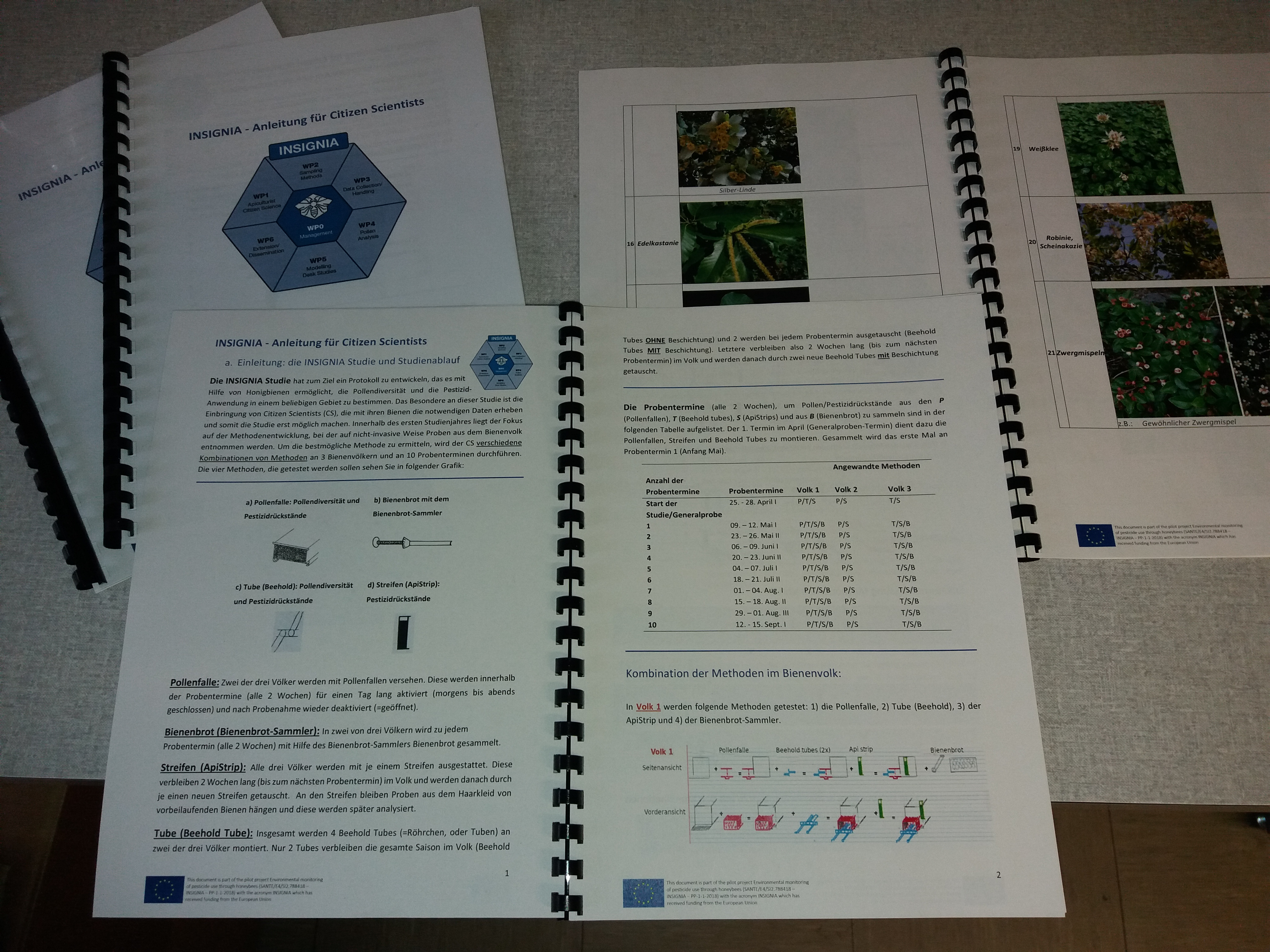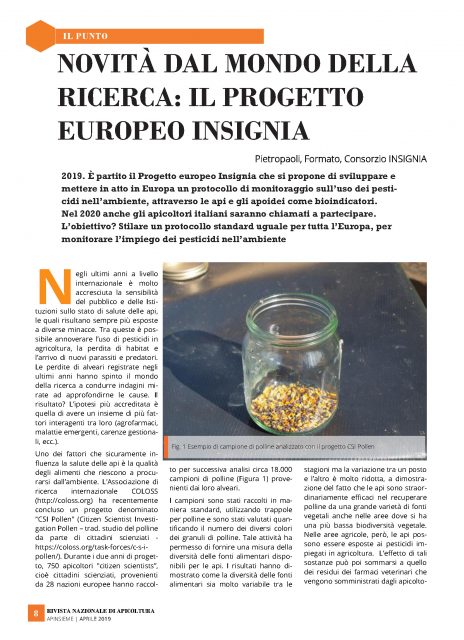Introducing INSIGNIA (environmental monitoring of pesticide use through honey bees)
By Norman Carreck and the INSIGNIA Consortium (https://www.insignia-bee.eu/)
In recent years, there has been much global concern about the plight of bees, which are exposed to many threats including habitat loss, pests and diseases, and environmental factors such as the use of agricultural pesticides and veterinary drugs. Concern about “Colony Collapse Disorder” and excessive losses of honey bee colonies has led scientists in many countries to carry out surveys of beekeepers to quantify those losses. This has established that losses of honey bee colonies, especially over winter, are often much higher than beekeepers consider to be acceptable. Establishing the cause of these losses is, however, much more difficult, and scientists agree that there is unlikely to be a single cause that applies in all years and in all areas, and that it is most likely that colony losses are a result of many interacting factors.
Continue reading “Introducing INSIGNIA”










